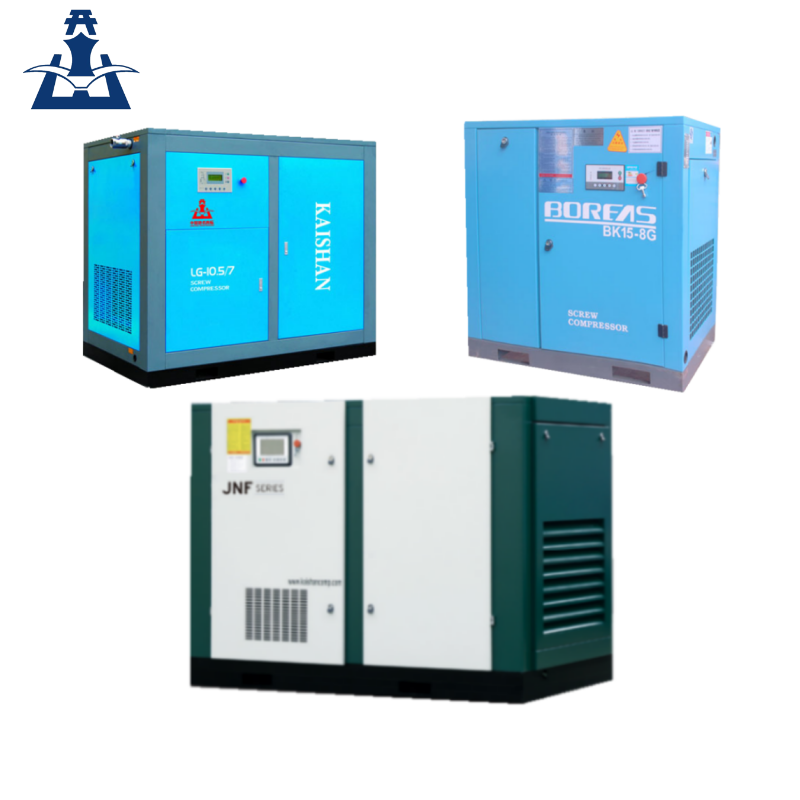I. Market analysis
1. Industry overview The air compressor industry is an important branch of the machinery manufacturing industry, and its products are widely used in industries such as industry, manufacturing, construction, and aerospace. With the rise in energy prices and the improvement of environmental protection requirements, the industry is gradually developing in the direction of high efficiency, energy saving, and environmental protection. In the domestic and foreign markets, there are both internationally renowned brands and domestic companies with strong competitiveness.
2. Competition pattern The competition pattern is relatively stable, but the competition is fierce. New entrants need to have high technical levels and strong R&D capabilities. Market demand is closely related to the development of industrial production and manufacturing, and users have higher requirements for product performance, efficiency, reliability, and environmental protection performance.
3. User demand analysis When users purchase air compressors, they not only pay attention to product performance and quality, but also consider factors such as brand, after-sales service, and price. Therefore, companies need to continuously improve and upgrade their products to meet the diverse needs of users.
II. Marketing strategy
1. Product positioning Companies should position themselves as professional and efficient air compression equipment suppliers, launch innovative and leading technology products, and attract industry attention and customer recognition. At the same time, according to the costs of product research and development, production, and sales, formulate fair and reasonable pricing strategies, and provide a variety of product combination packages to meet the needs of different customers.
2. Promotion strategy Offline promotion: participate in industry exhibitions, hold product launch conferences, organize field visits, etc., to increase customers’ understanding and trust in products. Online promotion: use social media, online advertising, email and other channels to promote the company and product advantages to potential customers. Preferential policies: launch preferential policies such as bulk purchase discounts and long-term cooperation agreements to attract customers to establish long-term cooperative relationships.
3. Sales channel Direct sales model: establish your own sales team to sell products. Agent model: cooperate with local agents to use their local resources and sales networks to jointly promote products. E-commerce platform: open an official flagship store on mainstream e-commerce platforms or cooperate with e-commerce platforms to expand online sales channels.
III. Brand management
1. Brand positioning Clarify the brand’s position in the market and target customer groups, and shape a unique brand image and values. Determine the characteristics and advantages of the product, as well as the needs and preferences of the target customer groups through detailed descriptions of product positioning and user positioning.
2. Brand communication Brand communication is carried out through various channels and methods, including advertising, public relations, promotions, social media, etc. Focus on interaction and communication with customers to improve brand awareness and reputation, and at the same time, expand brand influence through word-of-mouth marketing and other methods.
3. Brand protection Take measures to protect brand image and intellectual property rights to prevent infringement from damaging the brand. Including measures such as registered trademarks, patent applications, copyright protection, and pay close attention to the dynamics of competitors and take timely measures to prevent infringement.
IV. Comprehensive suggestions
In the current situation, if air compressor companies want to do a good job in marketing management, they need to clarify product positioning, formulate effective promotion strategies, expand diversified sales channels, and strengthen brand management and protection. At the same time, they also need to pay close attention to market dynamics and changes in user needs, and adjust strategies in time to meet market challenges.
It is recommended that companies strengthen technology research and development and innovation capabilities, improve product performance and quality levels; strengthen marketing team building and management level improvement; focus on brand building and maintenance; actively explore emerging market areas and expand product lines; strengthen cooperation with channel dealers and partners, etc.
Post time: Nov-04-2024




